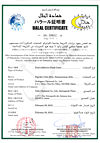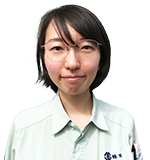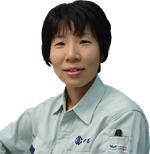The Hodogaya Chemical Group sets forth a set of internal rules on the use of chemical substances and measures to control the content in products, etc. based on the Basic Philosophy of Responsible Care (RC) to ensure environmental conservation, safety and health, and product quality, which forms the basis for all business activities. The aim of these rules is to voluntarily manage chemical substances that are likely to injure human health or impact the global environment in each process, from development, manufacturing, transportation, and use to disposal.
From the perspectives of environmental conservation, security and disaster prevention, workplace safety and health, and product safety, the Hodogaya Chemical Group manages chemical substances in all phases, from development, raw materials procurement, manufacturing, and use to disposal.
To the controlled chemical substances designated under national laws and regulations have been added those requested under customers’ RoHS and REACH directive as well as green procurement policies.
The substances are categorized into three groups: prohibited substances, the manufacture, import and use of which are prohibited in principle under domestic law; release-restricted substances, on which domestic laws require that restrictions be placed on their release into the environment or that their environmental impact be reduced; and controlled substances in products, those that customers have requested either not be present in products or that the amounts contained be controlled. Having been made into a database, this system provides integrated management of information on all products, raw materials, and chemical substances handled by the Hodogaya Chemical Group.
We also ensure that information is provided to our customers in a standardized format, including confirmation of legal compliances with national and foreign laws and regulations, the automated production of safety data sheets (SDSs) and product labels in multiple languages as well as the compiling of safety information on the chemicals contained in our products.
The Hodogaya Chemical Group formulates procedures for risk assessments to prevent accidents and disasters, and measures to reduce risks based on the assessment results. The Group also sets forth the Risk Assessment Guidelines to clearly identify risks and take precise measures, and implements them on a regular basis.
The substances to be subjected to risk assessments are divided into two categories—the risk assessment of operations and the risk assessment of handling chemical substances—to enable the clearer identification of risks and more precise measures to be taken.
For new processes, the goal is to protect safety, the environment, and health at work sites while preventing accidents and disasters in advance. Items related to managing safety during the operation of production facilities, prototypes and intermediate testing, and other work sites are being investigated and discussed in advance for safety measures from a technical and management viewpoint.
In addition to the conventional regulations such as TSCA (USA) and REACH (Europe), Asian countries including China, South Korea and Taiwan are actively enforcing new laws and regulations.
In order for the Hodogaya Chemical Group to expand its business globally, it not only works in close collaboration with foreign affiliate companies and representative offices, but also takes active part in various industry activities to keep track of the latest trends in chemical substance management policies and legislation of other countries so as to be prepared to respond in a timely manner.
We share this legislative information and responses from other countries with the entire Hodogaya Chemical Group.
HACCP (Hazard Analysis Critical Control Point) is a system of international food hygiene management standards.
HACCP requires preparation of a hygiene management plan for supplementing consistent implementation of the usual hygiene management by identifying any hazards such as contamination with bacteria that cause food poisoning, or foreign substances. Hazards are to be identified according to the raw materials and the manufacturing method used, and the plan should aim to eliminate or reduce them to a level at which they pose no risk from a food hygiene perspective.
The Koriyama Plant employs HACCP-compliant hygiene management in manufacturing hydrogen peroxide and peracetic acid as food additives, and plans to obtain certification during FY2020.
We will continue responding to customer needs by enhancing our reliability in terms of hygiene management, as in other areas, and adding greater value to our product portfolio.

Certain natural food dyes acquired Halal certification from the Japan Muslim Association. This means that the products have cleared the requirements of Islamic law, including those related to the manufacturing environment, quality, and processing. These materials can be seen as safe and trustworthy by Muslims (believers in Islam) upon purchase without the need to personally check the ingredients.

Yokohama Plant
Mari Kaneko
We are engaged in the development and quality inspection of dyestuffs, and use organic solvents and chemicals that are acidic or alkaline. In recent years, the production of dyestuff increased due to the rise in demand, and the number of staff and work scale expanded in the workplace.
In an workplace where people have different levels of experience and there are major changes to the work environment, I think that following the conventional ways alone is not sufficient in ensuring safety. Operators need to understand the characteristics and toxicity of the chemicals they handle through education and predict risks before conducting operations. The sense of danger I have concerning my workplace should be shared within the workplace through near miss/close calls, risk assessments, and everyday communication, which should lead to creating a better workplace environment and improving our individual knowledge and sensitivity on chemical safety.

Yokohama Plant
(Current Koriyama Plant)
Kanae Otsuka
My job is to inspect the quality of dyes, and I think you must have the sensibility to detect danger to achieve day-to-day operation safety. To discover and remove or reduce dangers and hazards in the workplace, we compile all the dangerous and hazardous factors that each one of us identifies in the workplace and take measures for those factors that are highly serious or likely to cause harm.
The large quantity knowledge on the danger and hazards in the workplace that we gain through these initiatives are extremely useful in our day-to-day operational safety practices. I also think that sharing with others the risk-related information that each one of us gathers in view of the safety measures is a highly effective way to nurture multitasking personnel in which one person can handle multiple responsibilities.